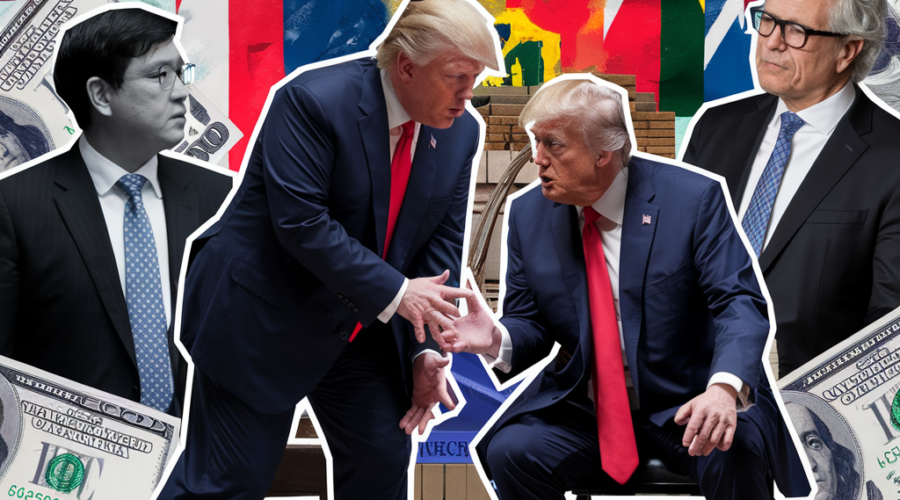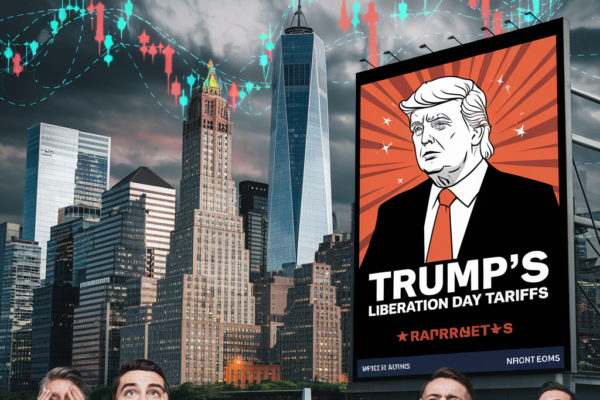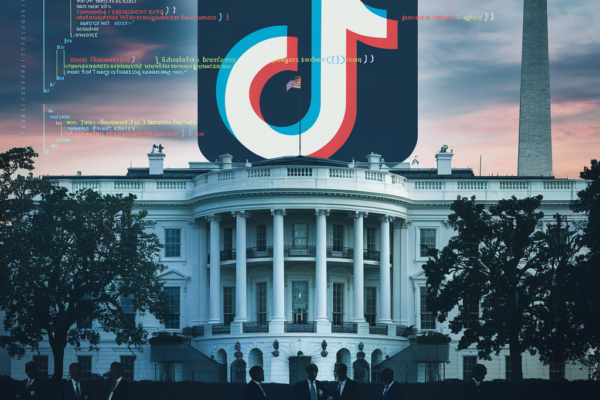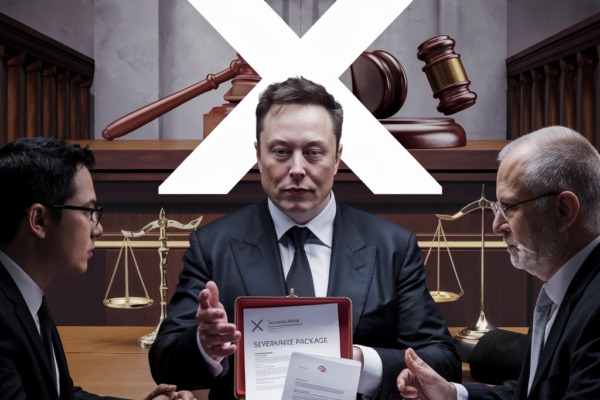President Donald Trump’s protracted battle to resolve TikTok’s U.S. operations reached critical juncture last week as a carefully negotiated divestment deal collapsed under the weight of escalating U.S.-China trade tensions. Multiple sources confirm the administration had finalized an agreement with ByteDance and American investors to spin off TikTok into a U.S.-controlled entity before China withdrew approval following Trump’s imposition of 54% tariffs on Chinese imports[1][4][6]. This eleventh-hour reversal exposes how the video-sharing platform has become entangled in broader struggles over technological sovereignty, data security, and economic statecraft between the world’s two largest economies.
The Geopolitical Crucible of Digital Platforms
TikTok’s Strategic Value in the Tech Cold War
With 170 million American users and sophisticated content recommendation algorithms, TikTok represents both commercial prize and national security vulnerability. The platform’s data collection practices and potential for foreign influence operations have raised bipartisan concerns since 2020, culminating in the Protecting Americans from Foreign Adversary Controlled Applications Act passed under President Biden[2][6]. However, the app’s cultural penetration and advertising reach made complete prohibition politically untenable, forcing the Trump administration to pursue structural solutions balancing security concerns with economic realities[9][12].
China’s Evolving Posture on Tech Exports
Beijing initially resisted forced divestitures through updated export controls on recommendation algorithms in 2023. This positioned TikTok’s core technology as protected intellectual property under China’s cybersecurity laws[12]. However, diplomatic channels suggested flexibility until Trump’s tariff announcement triggered hardline retaliation. The Ministry of Commerce now insists any transfer of TikTok’s U.S. operations must comply with revised regulations governing cross-border data flows and critical information infrastructure[5][7].
The Near-Finalized Deal Structure
Ownership and Governance Framework
The abandoned agreement would have established TikTok U.S. as a Delaware-based subsidiary with 50% ownership by new American investors including Oracle, Blackstone, and Andreessen Horowitz. Existing U.S. shareholders would retain 30%, reducing ByteDance’s stake to 19.9% – below the congressional threshold[6][12]. Oracle would have provided cloud infrastructure and data security assurances through its “Oracle Secure Cloud” environment, while operational control rested with a board comprising majority U.S. appointees[9][12].
Algorithm Licensing Arrangements
Contrary to initial proposals requiring complete technology transfer, the compromise allowed ByteDance to license its recommendation engine to TikTok U.S. through renewable contracts. This structure aimed to satisfy Chinese export controls while establishing firewall protocols monitored by the Committee on Foreign Investment in the United States (CFIUS)[12]. Critics argued this left potential backdoor vulnerabilities, but administration officials considered it the only viable path to maintain platform functionality[9][12].
Tariffs as Negotiation Leverage Backfire
The Liberation Day Tariff Surprise
On April 3, Trump unveiled sweeping baseline tariffs of 20% on all imports, with an additional 34% surcharge targeting China specifically. This brought total duties on Chinese goods to 54%, exceeding even his first-term trade war measures[4][7]. The move came just hours after negotiators had shaken hands on the TikTok framework, catching Beijing and ByteDance leadership off guard[1][6].
China’s Retaliatory Calculus
Within 24 hours, the Chinese Ministry of Commerce announced matching 34% tariffs on U.S. agricultural and manufacturing exports. More critically for TikTok’s fate, regulators informed ByteDance they would block any technology transfers or corporate restructuring approvals until broader trade negotiations resumed[6][9]. This linked TikTok’s survival directly to U.S. willingness to reconsider tariff levels – a connection Trump later confirmed, stating “If I gave a little cut in tariffs they would approve that deal in 15 minutes”[2][4].
Strategic Implications for U.S.-China Relations
Economic Statecraft in the Digital Age
The TikTok impasse illustrates how technology platforms have become both instruments and arenas of geopolitical competition. China’s ability to derail a commercially negotiated deal through regulatory levers demonstrates the blurred lines between corporate and state interests in its digital economy[5][12]. Conversely, Trump’s use of tariffs as both economic weapon and bargaining chip reveals the continued centrality of traditional trade tools in managing complex tech disputes[3][7].
Collateral Damage to Business Certainty
Major investors including Blackstone and Oracle now face extended uncertainty over their proposed $35 billion acquisition. Market analysts estimate the delay costs TikTok U.S. $200 million monthly in lost growth opportunities and legal/compliance expenses[10][12]. Broader implications emerge for cross-border tech investments, with the U.S.-China Business Council reporting a 40% drop in venture capital flows since January 2025[10].
Industry Ramifications and Competitive Landscape
Social Media Market Realignment
As TikTok’s future remains uncertain, competitors are aggressively capitalizing. Meta has relaunched Instagram Reels with enhanced monetization features, while X (formerly Twitter) reports 300% growth in short-form video uploads since March 2025[10]. Emerging platforms like Clapper and Zigazoo are attracting niche audiences, though none yet rival TikTok’s cultural cachet among Gen Z users[12].
Advertiser Exodus and Revenue Impacts
Major brands have begun diversifying social media budgets, with Procter & Gamble and Nike reallocating 30% of planned TikTok spend to alternative platforms[10]. This shift could cost TikTok U.S. up to $4 billion in 2025 revenue according to eMarketer projections, weakening its valuation ahead of any eventual sale[12].
The Path Forward: Negotiation Scenarios
Potential Compromise Frameworks
Administration officials hint at possible tariff carve-outs for consumer electronics in exchange for Chinese approval of the TikTok deal[7][9]. Another proposal involves establishing escrow accounts where tariff revenues could be partially rebated contingent on Beijing’s cooperation[4]. However, China’s Commerce Ministry maintains that “tariffs and technology transfers must be addressed through separate channels”[5][12].
Contingency Planning for Platform Transition
CFIUS has quietly approved emergency protocols allowing TikTok U.S. to operate under temporary stewardship by a government-appointed oversight board if negotiations fail[9]. This “trusteeship model” draws from historical precedents like the Office of Alien Property Custodian during World War II, though legal scholars question its applicability to digital assets[12].
Conclusion: Stalemate With Global Repercussions
The TikTok saga has evolved into a high-stakes test of whether economic interdependence can survive intensifying tech rivalry. With neither Washington nor Beijing showing willingness to back down, businesses face a new paradigm where commercial logic bows to national security imperatives. As the 75-day extension period begins, all eyes remain on whether pragmatic compromise can emerge from this collision of algorithms and tariffs. The outcome will set critical precedents for how democracies and authoritarian systems manage the digital infrastructure shaping 21st-century public discourse[5][12].
Sources
https://www.politico.com/news/2025/04/04/trump-tiktok-deal-00272469, https://www.foxbusiness.com/economy/trump-says-china-would-approve-tiktok-deal-15-minutes-he-cut-tariffs, https://www.youtube.com/watch?v=-R8wrOjLRZM, https://www.businessinsider.com/trump-pretty-close-to-tiktok-deal-beijing-tariffs-2025-4, https://www.deccanherald.com/world/explained-how-trumps-tiktok-negotiations-were-upended-by-china-and-tariffs-3483213, https://abcnews.go.com/Politics/Tiktok-deal-us-china-trade-war/story?id=120494441, https://www.foxbusiness.com/politics/china-halted-tiktok-deal-us-over-tariffs-report, https://www.cbsnews.com/video/tiktok-deal-almost-finish-line-before-trump-tariff-announcement/, https://www.washingtonexaminer.com/news/white-house/3371071/trump-tariffs-china-upended-tiktok-deal-bytedance-last-minute/, https://www.youtube.com/watch?v=XaExMjDJHaE, https://www.youtube.com/watch?v=9BozoSdnR0Q, https://theedgemalaysia.com/node/750373





